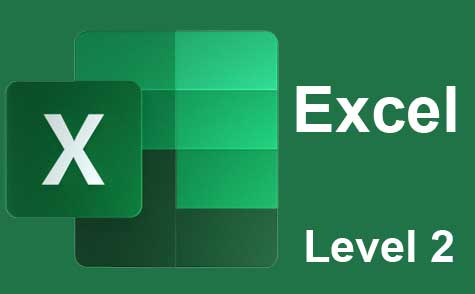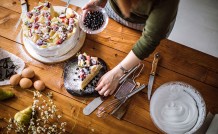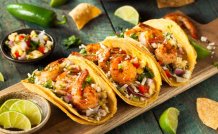Online Class: Cooking and Baking 101

no certificate
with CEU Certificate*
-
11Lessons
-
28Exams &
Assignments -
6,933Students
have taken this course -
11Hours
average time -
1.1CEUs
Course Description
Mastering the Art of Culinary Creations: A Comprehensive Course
Food is a universal language, and the act of preparing it—be it cooking or baking—is an art form that many wish to master. Yet, entering the kitchen isn't always as intuitive as one might expect. While it's a space brimming with potential, it's also a domain where skill, knowledge, and passion intersect.
While many of us have fond memories of watching a family member whip up a favorite dish or bake cookies during the holidays, these passive experiences don't automatically translate into proficiency. A recent survey indicated that having an active mentor or guide in the kitchen significantly boosts one's culinary confidence and skills. But what if you weren't fortunate enough to have such guidance? Or perhaps the fast-paced nature of modern life kept you from exploring this realm further?
Fear not, for culinary prowess isn't a gift bestowed at birth—it's an acquired skill, and with the right guidance, anyone can harness it.
Our Course's Essence
Designed for novices and those looking to refine their culinary techniques, this course promises a holistic journey. From understanding the foundational differences between cooking and baking to mastering the art of meal planning, we've curated a syllabus that ensures a well-rounded culinary education.
Course Highlights:
-
Cooking vs. Baking: A Brief Overview
- Dive deep into the nuances between these two art forms. Understand the science and aesthetics that define each.
-
Kitchen Equipment:
- Familiarize yourself with essential tools and gadgets. From the humble chef's knife to specialized bakeware, we'll explore the instruments that make a kitchen functional.
-
Cooking Terms:
- Decode the culinary lingo. Terms like 'braise', 'sauté', or 'julienne' will no longer be enigmatic.
-
Baking Terms:
- Grasp the language of baking. Understand what it truly means to 'fold', 'cream', or 'proof' in the baking context.
-
Fresh Ingredients:
- Appreciate the role of fresh produce and ingredients. Learn to select, store, and utilize them to maximize flavors.
-
Pantry Essentials:
- Stocking your pantry wisely can be a game-changer. Discover the staples that can help you whip up meals on the fly.
-
Using Cooking Recipes:
- Unravel the anatomy of a recipe. Learn to read, interpret, and adapt cooking recipes to suit your preferences.
-
Using Baking Recipes:
- Baking is as much science as it is art. Dive into the precision required in baking recipes and the magic they can create.
-
Expanding Recipes:
- Enhance your culinary repertoire by learning how to modify and expand existing recipes. Add your unique twist to traditional dishes.
-
Meal Planning:
- Organize and plan meals efficiently. Whether it's for a busy weekday or a special gathering, become adept at designing balanced, delectable menus.
- Safety in the Kitchen:
- Safety is paramount. Equip yourself with best practices to ensure a safe cooking and baking environment.
Why Enroll?
Culinary skills are not just about feeding oneself; they're about nourishing souls, building connections, and creating memories. Our course isn't just a set of lessons; it's a journey into the world of flavors, textures, and aromas. Whether you aspire to be a home chef, want to impress friends, or simply wish to enjoy the therapeutic act of cooking and baking, this course will serve as your comprehensive guide.
Join us, and let's transform your kitchen into a canvas where delicious masterpieces come to life!
Course Motivation
What is Cooking?
Cooking can be loosely defined as any action in your kitchen that gets you from point A) a pile of ingredients to point B) a meal. It is the act of assembling ingredients and/or applying heat to ingredients for human consumption. This means that cooking can be as simple as assembling vegetables to make a salad or as complicated as combining a number of different ingredients on a stovetop over a period of three hours.
"Cooking" is actually an umbrella term for a number of tasks and activities. It's kind of like when you think of the word "clothes." When you get dressed in the morning, the word "clothes" really means quite a few things; undergarments, shirts, shorts, pants, dresses, and socks all fall under the category, even though it doesn't necessarily mean that you're going to wear them all at once. In the same way, you can cook using a variety of different methods. You don't necessarily use them all at once, but each of them still counts as cooking.
There are ten basic types of cooking:
- Roasting
Roasting is done when you cook food using dry heat. In the historical sense, this includes placing a large piece of meat on a stick and putting it over flames. In the more modern sense, this includes putting things in your oven. Meat and vegetables are the most commonly roasted food items.
- Broiling
Broiling is also typically done in an oven. However, the heat comes from the top of the oven, rather than the bottom. You can broil anything from a toasted cheese sandwich to fish.
- Grilling
Grilling is when you cook food directly over a heat source. It includes outdoor grilling (on a barbeque) as well as indoor grilling. For example, when you cook a steak in this way, you place it directly on the grill above the charcoal or flames.
- Frying
Food is fried when it is cooked in some sort of fat (like lard, butter, or oil). It can be done in an oven, a fryer, or a pan. Fried foods are usually higher in calories and fat than food cooked in other ways.
- Boiling
This occurs when the food is placed in boiling water. Many vegetables are cooked this way, although meat and noodles are also commonly boiled.
- Simmering
Simmering is a slow form of cooking. Food is not brought to a boiling point , instead being allowed to warm over a long period of time. It can be done in a pan, the oven, or a slow-cooker.
- Steaming
Steaming is done by using the hot vapors of boiling water to cook foods; the food usually never touches the actual water. This is the best way to keep all the vitamins and nutrients in your food intact.
- Microwaving
This modern cooking type uses the microwave to warm or cook food. Because of their versatility, microwaves can actually be used to perform a number of different cooking types. For example, you can boil, steam, or even defrost things in the microwave.
- Assembling
This type of cooking uses no direct heat. It calls for the combination of uncooked or pre-cooked ingredients. Salads, sandwiches, and even more complex meals can be made this way.
- Baking
What is Baking?
As we mentioned before, baking is really just one of the ten types of cooking. It almost always centers on a different set of ingredients, skills, and utensils than cooking in the traditional sense.
Consider it this way: when most people think of baking, they conjure up images of sweets and bread-like foods that are made of batter or dough, put in the oven, and cooked. Things like bread, cakes, cookies, and pastries fall into this category. If we stick to this idea of baking, there are a few common ingredients that will arise time and time again. If you find yourself faced with a recipe containing these ingredients and calling for oven time, it's a pretty safe bet that you will be baking.
- Flour (either wheat or white)
- Sugar
- Salt
- Fat (oil, butter, margarine, shortening, lard)
- Eggs
- Yeast
- Baking Powder
- Baking Soda
There's a saying among chefs and cooks everywhere: "Baking is a science, cooking is an art." This saying came about because baking is a pretty precise process, whereas cooking can take on a flair all its own. When you are cooking, it's fairly easy to make substitutions or to throw in a little extra of your favorite ingredient so that the outcome is personalized for your tastes. However, when baking, each ingredient serves a specific purpose (for example, baking powder releases the right amount of carbon dioxide into the batter to allow bread or cake to rise). Making a small error or alteration can completely change the outcome of the dish.
Baking is also considered a science because of the chemical reactions that take place during the cooking process. When something is put into an oven, you may notice that it gets nice and crispy around the edges (this is true for breads and pastries as well as casseroles or meat). This process is known as caramelization . It occurs when the sugars in the food react to the other ingredients and heat to change the molecular makeup of the food (therefore adding new flavors to the dish). You can experience this firsthand when you roast a marshmallow over a campfire – yes, the marshmallow gets black and crispy, but it also takes on a whole different flavor and smell.
Baking is almost always done with dry heat in the oven. As the outside of the food becomes crispy and carmelized, the cooking process internalizes. The moisture of the food gets "locked in," allowing the ingredients to do their work without drying out or overcooking. This is not to say that food left in an oven won't eventually dry out or overcook – it simply means that it takes longer to do in an oven than in any other type of cooking.
Historically, before modern-day ovens were available, baking was done over a fire or in hot ashes. In fact, bread baking can actually be dated back to the Stone Age. In some cultures today, baking without the use of an oven is still fairly common.
- Completely Online
- Self-Paced
- Printable Lessons
- Full HD Video

- 6 Months to Complete
- 24/7 Availability
- Start Anytime
- PC & Mac Compatible
- Android & iOS Friendly
- Accredited CEUs
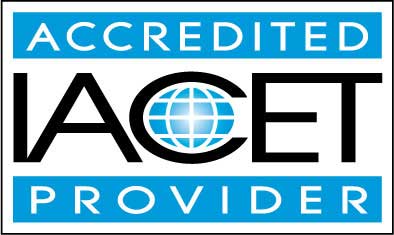
Course Lessons
Lesson One: Cooking vs. Baking: A Brief Overview
 Lesson 1 Video A
Lesson 1 Video A
 Lesson 1 Video B
Lesson 1 Video B
 Lesson discussions: Cooking vs. Baking; Reasons for Taking this Course
Lesson discussions: Cooking vs. Baking; Reasons for Taking this Course Complete Assignment: An Introduction
Complete Assignment: An Introduction Complete: Lesson 1 Assignment
Complete: Lesson 1 Assignment Assessment: Lesson One: Cooking vs. Baking: A Brief Overview
Assessment: Lesson One: Cooking vs. Baking: A Brief Overview
Lesson Two: Kitchen Equipment
 Lesson 2 Video A
Lesson 2 Video A
 Lesson 2 Video B
Lesson 2 Video B
 Complete: Lesson 2 Assignment
Complete: Lesson 2 Assignment Assessment: Lesson Two: Kitchen Equipment
Assessment: Lesson Two: Kitchen Equipment
Lesson Three: Cooking Terms
 Lesson 3 Video A
Lesson 3 Video A
 Lesson 3 Video B
Lesson 3 Video B
 Complete: Lesson 3 Assignment
Complete: Lesson 3 Assignment Assessment: Lesson Three: Cooking Terms
Assessment: Lesson Three: Cooking Terms
Lesson Four: Baking Terms
 Lesson 4 Video A
Lesson 4 Video A
 Lesson 4 Video B
Lesson 4 Video B
 Complete: Lesson 4 Assignment
Complete: Lesson 4 Assignment Assessment: Lesson Four: Baking Terms
Assessment: Lesson Four: Baking Terms
Lesson Five: Fresh Ingredients
 Lesson 5 Video A
Lesson 5 Video A
 Lesson 5 Video B
Lesson 5 Video B
 Lesson discussions: Seasonal Foods
Lesson discussions: Seasonal Foods Complete: Lesson 5 Assignment
Complete: Lesson 5 Assignment Assessment: Lesson Five: Fresh Ingredients
Assessment: Lesson Five: Fresh Ingredients
Lesson Six: Pantry Essentials
 Lesson 6 Video A
Lesson 6 Video A
 Lesson 6 Video B
Lesson 6 Video B
 Complete: Lesson 6 Assignment
Complete: Lesson 6 Assignment Assessment: Lesson Six: Pantry Essentials
Assessment: Lesson Six: Pantry Essentials
Lesson Seven: Using Cooking Recipes
 Lesson 7 Video A
Lesson 7 Video A
 Lesson 7 Video B
Lesson 7 Video B
 Complete: Lesson 7 Assignment
Complete: Lesson 7 Assignment Complete Assignment: Zagat Survey
Complete Assignment: Zagat Survey Assessment: Lesson Seven: Using Cooking Recipes
Assessment: Lesson Seven: Using Cooking Recipes
Lesson Eight: Using Baking Recipes
 Lesson 8 Video A
Lesson 8 Video A
 Lesson 8 Video B
Lesson 8 Video B
 Complete: Lesson 8 Assignment
Complete: Lesson 8 Assignment Assessment: Lesson Eight: Using Baking Recipes
Assessment: Lesson Eight: Using Baking Recipes
Lesson Nine: Expanding Recipes
 Lesson 9 Video A
Lesson 9 Video A
 Lesson 9 Video B
Lesson 9 Video B
 Complete: Lesson 9 Assignment
Complete: Lesson 9 Assignment Complete Assignment: Dessert
Complete Assignment: Dessert Assessment: Lesson Nine: Expanding Recipes
Assessment: Lesson Nine: Expanding Recipes
Lesson Ten: Meal Planning
 Lesson 10 Video A
Lesson 10 Video A
 Lesson 10 Video B
Lesson 10 Video B
 Complete: Lesson 10 Assignment
Complete: Lesson 10 Assignment Complete Assignment: James Beard Award
Complete Assignment: James Beard Award Complete Assignment: Gluten Free Meals
Complete Assignment: Gluten Free Meals Assessment: Lesson Ten: Meal Planning
Assessment: Lesson Ten: Meal Planning
Lesson Eleven: Safety in the Kitchen
 Lesson 11 Video A
Lesson 11 Video A
 Lesson 11 Video B
Lesson 11 Video B
 Lesson discussions: Kitchen Safety; Program Evaluation Follow-up Survey (End of Course); Course Comments
Lesson discussions: Kitchen Safety; Program Evaluation Follow-up Survey (End of Course); Course Comments Complete: Lesson 11 Assignment
Complete: Lesson 11 Assignment Assessment: Lesson Eleven: Safety in the Kitchen
Assessment: Lesson Eleven: Safety in the Kitchen Assessment: The Final Exam
Assessment: The Final Exam
Learning Outcomes
- Describe kitchen equipment needed.
- Define cooking terms.
- Define baking terms.
- Summarize the use of fresh ingredients.
- Describe the essential stockings of a pantry.
- Demonstrate usage of cooking recipes.
- Demonstrate usage of baking recipes.
- Summarize techniques used to expand recipes.
- Summarize safety techniques in the kitchen.
- Demonstrate mastery of lesson content at levels of 70% or higher.
Additional Course Information
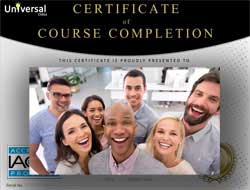
- Document Your Lifelong Learning Achievements
- Earn an Official Certificate Documenting Course Hours and CEUs
- Verify Your Certificate with a Unique Serial Number Online
- View and Share Your Certificate Online or Download/Print as PDF
- Display Your Certificate on Your Resume and Promote Your Achievements Using Social Media
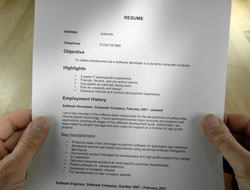
Choose Your Subscription Plan
No Certificate / No CEUs
This course only
| Includes certificate | X |
| Includes CEUs | X |
| Self-paced |

|
| Instructor support |

|
| Time to complete | 6 months |
| No. of courses | 1 course |
Certificate & CEUs
This course only
| Includes certificate |

|
| Includes CEUs |

|
| Self-paced |

|
| Instructor support |

|
| Time to complete | 6 months |
| No. of courses | 1 course |
Certificates & CEUs
Includes all 600+ courses
| Includes certificate |

|
| Includes CEUs |

|
| Self-paced |

|
| Instructor support |

|
| Time to complete | 12 Months |
| No. of courses | 600+ |
Certificates & CEUs
Includes all 600+ courses
| Includes certificate |

|
| Includes CEUs |

|
| Self-paced |

|
| Instructor support |

|
| Time to complete | 24 Months |
| No. of courses | 600+ |
Student Testimonials
- "It was an excellent course and I learned a lot. It was very helpful and I was able to apply it to my own personal cooking and baking." -- Donna W.
- "I found the videos with the woman cooking extremely helpful and informative. I copied some of the recipes she shared. I also enjoyed the fun recipes in the course. The instructor was very prompt at marking assignments etc." -- Jan M.
- "The instructor was engaged and provided feedback. She was available to offer assistance when needed." -- Colette E.
- "I liked watching the cooking videos, it's like watching the cooking channel." -- Julie J.
- "The instructor always got back to my promptly, and I really appreciated that." -- Karen G.
- "There was a lot of termonology I did not understand when reading recipes and the course helped me figure out what everything meant." -- Karen G.
Related Courses
-
 54 hours
5.4 CEUs
Become a Life Coach - Course Bundle
+ More Info
54 hours
5.4 CEUs
Become a Life Coach - Course Bundle
+ More Info
-
 45 hours
4.5 CEUs
Event Management Course Bundle
+ More Info
45 hours
4.5 CEUs
Event Management Course Bundle
+ More Info
-
 15 hours
1.5 CEUs
Western Calligraphy
+ More Info
15 hours
1.5 CEUs
Western Calligraphy
+ More Info
-
 11 hours
1.1 CEUs
Wellness Coaching
+ More Info
11 hours
1.1 CEUs
Wellness Coaching
+ More Info
-
 7 hours
0.7 CEUs
Wedding Traditions Around the World
+ More Info
7 hours
0.7 CEUs
Wedding Traditions Around the World
+ More Info
-
 17 hours
1.7 CEUs
Mixed Media Art
+ More Info
17 hours
1.7 CEUs
Mixed Media Art
+ More Info
-
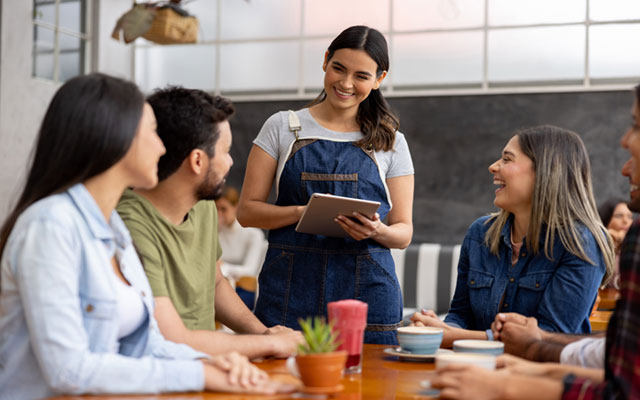 7 hours
0.7 CEUs
Waiter and Waitress Training 101
+ More Info
7 hours
0.7 CEUs
Waiter and Waitress Training 101
+ More Info
-
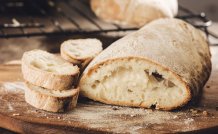 5 hours
0.5 CEUs
Bread Baking 101
+ More Info
5 hours
0.5 CEUs
Bread Baking 101
+ More Info
-
 9 hours
0.9 CEUs
Aromatherapy 101
+ More Info
9 hours
0.9 CEUs
Aromatherapy 101
+ More Info
-
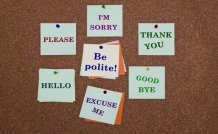 6 hours
0.6 CEUs
Etiquette Consultant
+ More Info
6 hours
0.6 CEUs
Etiquette Consultant
+ More Info
-
 4 hours
0.4 CEUs
Etiquette for Children and Teens
+ More Info
4 hours
0.4 CEUs
Etiquette for Children and Teens
+ More Info
-
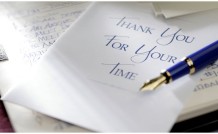 7 hours
0.7 CEUs
Etiquette 101
+ More Info
7 hours
0.7 CEUs
Etiquette 101
+ More Info
-
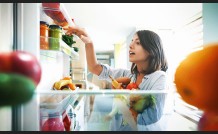 7 hours
0.7 CEUs
Nutrition 101
+ More Info
7 hours
0.7 CEUs
Nutrition 101
+ More Info
-
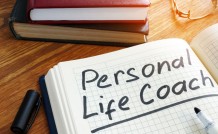 7 hours
0.7 CEUs
How to Be Your Own Life Coach
+ More Info
7 hours
0.7 CEUs
How to Be Your Own Life Coach
+ More Info
-
 7 hours
0.7 CEUs
Lifetime Wellness 101
+ More Info
7 hours
0.7 CEUs
Lifetime Wellness 101
+ More Info
-
 9 hours
0.9 CEUs
Watercolor Painting 101
+ More Info
9 hours
0.9 CEUs
Watercolor Painting 101
+ More Info
-
 5 hours
0.5 CEUs
Anti Aging Techniques
+ More Info
5 hours
0.5 CEUs
Anti Aging Techniques
+ More Info
-
 5 hours
0.5 CEUs
Healing Affirmations
+ More Info
5 hours
0.5 CEUs
Healing Affirmations
+ More Info
-
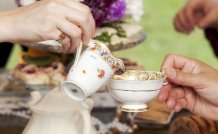 3 hours
0.3 CEUs
Tea Parties 101
+ More Info
3 hours
0.3 CEUs
Tea Parties 101
+ More Info
-
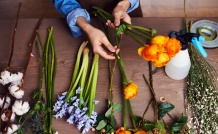 10 hours
1.0 CEUs
Floral Arrangement 101
+ More Info
10 hours
1.0 CEUs
Floral Arrangement 101
+ More Info
-
 8 hours
0.8 CEUs
Special Events Planning
+ More Info
8 hours
0.8 CEUs
Special Events Planning
+ More Info
-
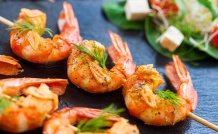 5 hours
0.5 CEUs
Catering 101
+ More Info
5 hours
0.5 CEUs
Catering 101
+ More Info
-
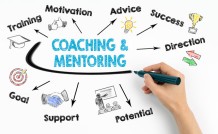 15 hours
1.5 CEUs
Life Coaching 101
+ More Info
15 hours
1.5 CEUs
Life Coaching 101
+ More Info
-
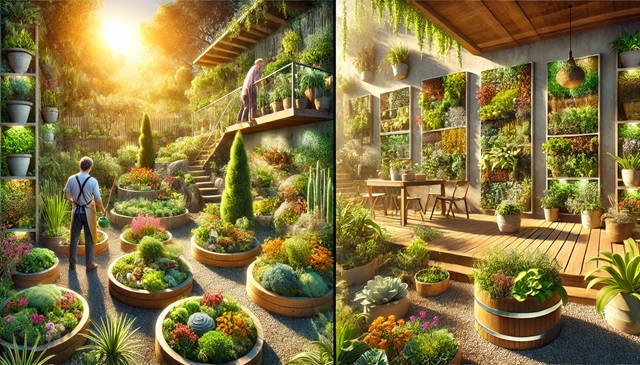 6 hours
0.6 CEUs
Introduction to Gardening
+ More Info
6 hours
0.6 CEUs
Introduction to Gardening
+ More Info
-
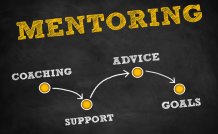 13 hours
1.3 CEUs
Image Consultant
+ More Info
13 hours
1.3 CEUs
Image Consultant
+ More Info
-
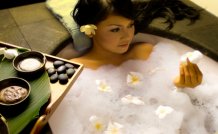 3 hours
0.3 CEUs
Therapeutic Bathing
+ More Info
3 hours
0.3 CEUs
Therapeutic Bathing
+ More Info
-
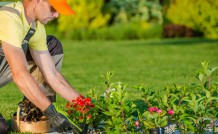 9 hours
0.9 CEUs
Landscaping 101
+ More Info
9 hours
0.9 CEUs
Landscaping 101
+ More Info
-
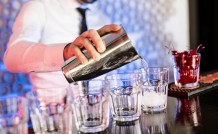 3 hours
0.3 CEUs
Bartending and Mixology 101
+ More Info
3 hours
0.3 CEUs
Bartending and Mixology 101
+ More Info
-
 9 hours
0.9 CEUs
Event Planning 101
+ More Info
9 hours
0.9 CEUs
Event Planning 101
+ More Info
-
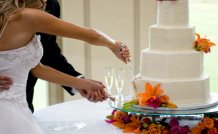 12 hours
1.2 CEUs
Wedding Planning 101
+ More Info
12 hours
1.2 CEUs
Wedding Planning 101
+ More Info
-
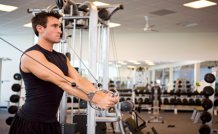 14 hours
1.4 CEUs
Weight Training 101
+ More Info
14 hours
1.4 CEUs
Weight Training 101
+ More Info
-
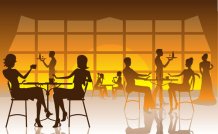 9 hours
0.9 CEUs
Party Planning 101
+ More Info
9 hours
0.9 CEUs
Party Planning 101
+ More Info
-
 14 hours
1.4 CEUs
Career Coaching
+ More Info
14 hours
1.4 CEUs
Career Coaching
+ More Info
-
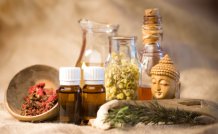 8 hours
0.8 CEUs
Aromatherapy (Intermediate to Advanced)
+ More Info
8 hours
0.8 CEUs
Aromatherapy (Intermediate to Advanced)
+ More Info


